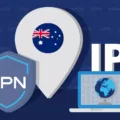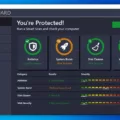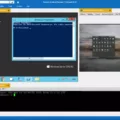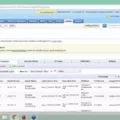In today’s digital world, patch management software is essential for business IT teams. Patch management software helps you keep your systems and applications secure by ensuring that the latest security patches and updates are applied to them regularly. But with so many different types of patch management solutions available, how do you know which one is best for your business?
When it comes to patch management, there are a variety of solutions available that can help keep your systems up-to-date and secure. From SolarWinds Patch Manager to GFI LanGuard and ManageEngine Patch Manager Plus, there’s something out there to meet every organization’s needs.
SolarWinds Patch Manager is a powerful solution that allows you to automate the process of deploying patches across your network. It provides an easy-to-use interface that makes it simple to deploy updates quickly and securely. Plus, its customizable scheduling options give you control over when patches are deployed and how often they should be installed.
Microsoft SCCM (System Center Configuration Manager) is another great option for patch management. This solution enables IT teams to manage Windows-based computers from a single console, including pushing out updates and security patches across the network. With SCCM, you also get features like automated deployment and reporting tools that make it easier to keep track of patching activities on all devices in your environment.
GFI LanGuard is another popular patch management solution designed specifically for small businesses. This software simplifies the process of patching by providing an intuitive dashboard where IT teams can quickly view all available patches in their environment and deploy them quickly with just a few clicks. GFI LanGuard also offers detailed reports so you can easily track which patches were installed when and on which machines.
NinjaRMM offers an affordable cloud-based solution for managing patches across multiple devices at once. This tool lets users view all available patches in one unified view, making it easy to deploy them in bulk with just a few clicks. Plus, NinjaRMM’s advanced reporting capabilities make it simple to generate detailed reports on patching activity so IT teams can stay on top of their security posture.
Finally, ManageEngine Patch Manager Plus is a comprehensive patching solution that automates the process of deploying updates across all endpoints in an organization’s environment—from desktops and servers to mobile devices like laptops, tablets, and smartphones. Additionally, this software provides advanced APD (Automatic Patch Deployment) options that allow users to set up automated scans for virus definition updates as well as schedule how frequently their systems should be scanned for any new vulnerabilities or threats detected in the wild.
No matter what type of business you run or what size network you have, there’s sure to be a patch management solution out there that meets your needs—whether you decide on SolarWinds Patch Manager or ManageEngine Patch Manager Plus, or something else entirely!
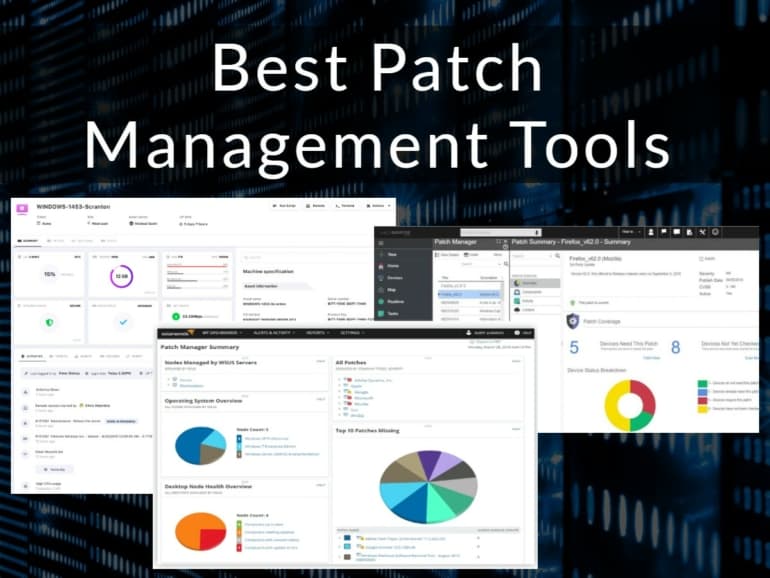
Using Software for Patch Management
Patch Management Software is used to automate the process of installing and managing software patches, security patches, and hotfixes on a computer system or network. Patch Management Software also helps to ensure that all machines on the network are up-to-date with the latest security patches and updates.
The most popular patch management software solutions include SolarWinds Patch Manager, Microsoft SCCM, GFI LanGuard, NinjaRMM, and ManageEngine Patch Manager Plus. SolarWinds Patch Manager provides comprehensive patch management for Windows servers and workstations. It helps to detect missing patches and vulnerabilities, then deploys those updates quickly across the entire network. Microsoft SCCM is a powerful patch management solution that provides configuration management for Windows-based systems. GFI LanGuard is an automated patch management system that discovers missing patches across multiple operating systems. NinjaRMM offers cloud-based patch management for Windows and MacOS devices, as well as automated vulnerability scanning. ManageEngine Patch Manager Plus is a comprehensive patch management tool designed specifically for IT administrators. It can be used to quickly deploy critical patches across multiple operating systems without disrupting end users.
For businesses seeking free options, there are several options available including ManageEngine, PDQ Deploy, Itarian, and Pulseway which offer free plans with limited features or capabilities.
Does Microsoft Offer a Patch Management Tool?
Yes, Microsoft has a patch management tool known as Patch Manager Plus. It is a comprehensive patch management solution that helps you automate the process of applying security patches to Windows systems across your network. Patch Manager Plus’ automated patch deployment (APD) options help you configure and schedule how frequently your systems scan for and install virus definition updates. It also simplifies the process of managing patch deployments for third-party applications such as Adobe, Java, Mozilla Firefox, and Google Chrome. With Patch Manager Plus, you can easily ensure all your systems are up-to-date with the latest security patches and virus definitions.
The Benefits of SCCM Patch Management
SCCM patch management is a feature of the Microsoft System Center Configuration Manager (SCCM) software suite that enables IT teams to quickly and efficiently deploy critical security updates and patches across an entire network. This feature enables organizations to keep their systems up-to-date with the latest security fixes, helping ensure that their networks are kept secure from malicious attacks. By leveraging SCCM’s automated patch management capabilities, IT teams can easily identify which machines need to be patched, ensuring that all essential updates are applied in a timely manner. Additionally, SCCM allows administrators to selectively install patches on specific systems or within specified groups, allowing them to tailor the update process to their individual needs.
The Benefits of BigFix Patch Management
BigFix Patch management is an automated patching solution that offers unified and near real-time visibility and enforcement to deploy and manage patches across all distributed endpoints. It provides a single console from which administrators can centrally manage the entire patching process. BigFix Patch helps reduce the time and effort required for manual patching, increases system uptime, reduces security risks, and simplifies compliance with industry regulations. It also enables you to quickly identify vulnerable systems, prioritize remediation tasks, and easily deploy patches to the right systems at the right time. With its intuitive interface, BigFix Patch makes it easy to set up policies, schedule patch deployments, track progress, create reports, and more.
Does Microsoft Intune Provide Patch Management?
Yes, Microsoft Intune does patch management. Intune enables IT admins to manage and deploy patches as part of their overall patch management strategy. With Intune, admins can schedule when a patch should be deployed, control which devices receive the patch, and monitor the progress of the deployment. Additionally, admins can set up policies to allow or block certain types of updates and create exceptions for specific patches. This way, IT admins have full control over which patches get deployed and when they get deployed.
Replacement for WSUS
ManageEngine Patch Manager Plus is a comprehensive patch management solution that has replaced Windows Server Update Services (WSUS). It offers a full-featured, centralized patch management platform for patching desktops, laptops, servers, and other devices across your network. Unlike WSUS, Patch Manager Plus offers patches for Windows, macOS, and Linux operating systems as well as 850+ third-party applications. It provides automated scanning for missing patches and deployment of approved patches to all endpoints in your network. It also offers detailed reports on vulnerabilities and patching activities in your organization. Additionally, it has an inbuilt asset inventory system that helps you manage your IT assets and their associated configurations. With Patch Manager Plus, you can ensure the health of your IT infrastructure by keeping all the devices up-to-date with the latest security patches.
Alternative to Windows Server Update Services (WSUS)
Yes, there are several alternatives to WSUS that provide comprehensive patch management and software update capabilities. SolarWinds Patch Manager is an excellent choice for Windows Server environments as it integrates with SCCM monitoring and can update the software on Mac OS, Unix, Linux, and Windows. Other tools such as ManageEngine Desktop Central and Shavlik Protect offer similar features but may be more suitable for specific platforms or organizations. Regardless of which tool you choose, patch management should always be part of your overall IT security strategy to ensure the safety and reliability of your systems.
Cost of BigFix Patch Management
IBM BigFix is a comprehensive patch management solution that helps organizations manage their IT infrastructure and ensure compliance with the latest security standards. The cost of BigFix patch management starts from Rs. 390/- per user per year. This includes access to the cloud-based platform, active patch management, enhanced visibility into your environment, and more. Additionally, you can also avail of advanced features such as automated remediation, vulnerability assessment, and reporting, real-time insights into patching operations, and more at an additional cost depending on your requirements. With BigFix, you can easily keep track of all the patches that need to be applied across your IT infrastructure, ensuring optimum security and compliance with the latest industry standards.
Is Yum a Patch Management Tool?
Yes, YUM is a patch management tool. It is the default package manager for Red Hat Enterprise Linux, and it is used to install, update and remove software packages on Linux systems. YUM works by downloading packages and their dependencies from the repositories configured on the system and then installing them into the system. It also has features such as dependency resolution, package groups, and multiple repository support, making it a robust patch management tool for managing software updates.
Conclusion
In conclusion, patch management is an essential tool for any business to ensure that its system is up-to-date and secure. The best patch management software solutions are those that provide automated patching, real-time visibility and enforcement, and a unified console for administration. Our top recommended patch management software includes SolarWinds Patch Manager, Microsoft SCCM, GFI LanGuard, NinjaRMM, and ManageEngine Patch Manager Plus. These highly rated programs offer free plans for those businesses on a budget. IBM BigFix Patch is also a great option with automated and simplified patching from a single console. With the right patch management software in place, businesses can rest assured knowing their system is safe from security threats and running optimally.



